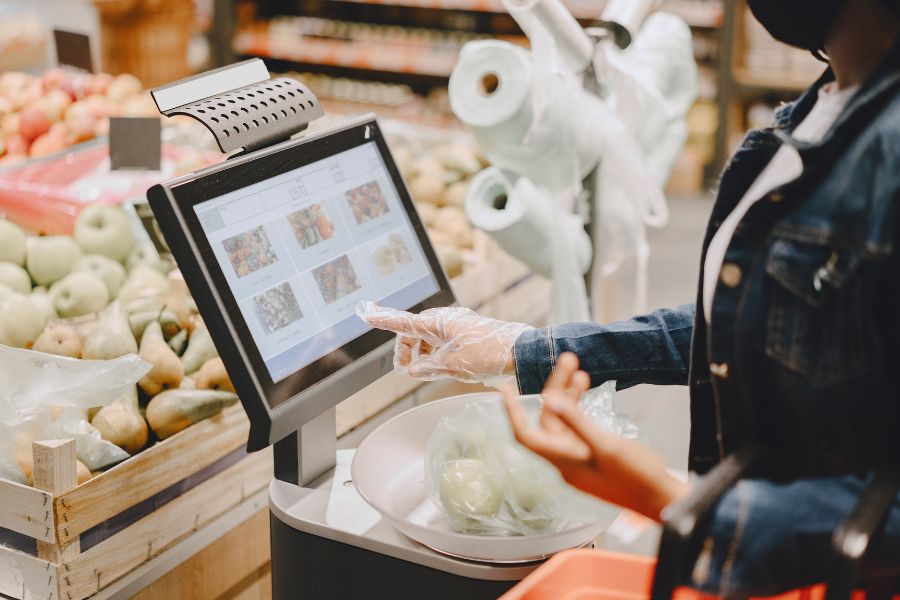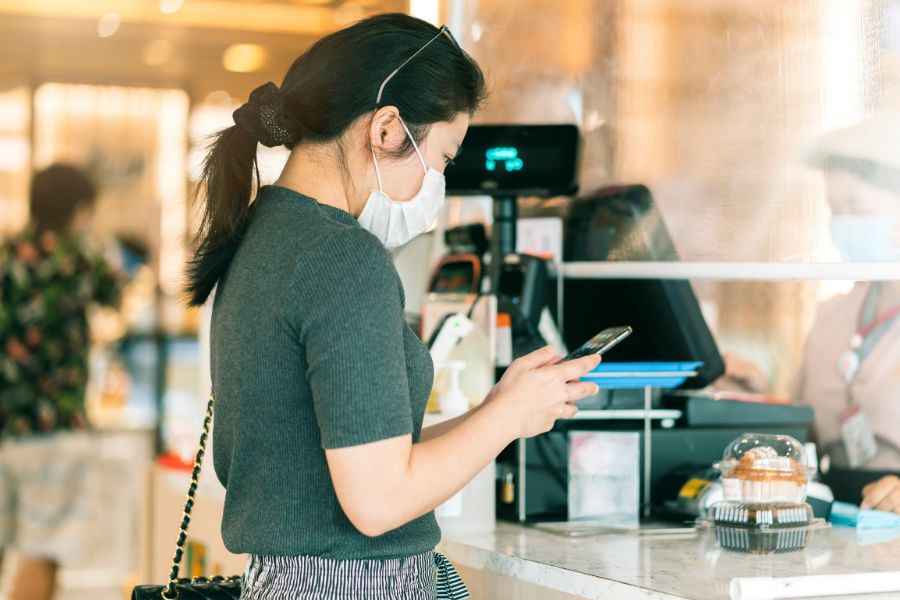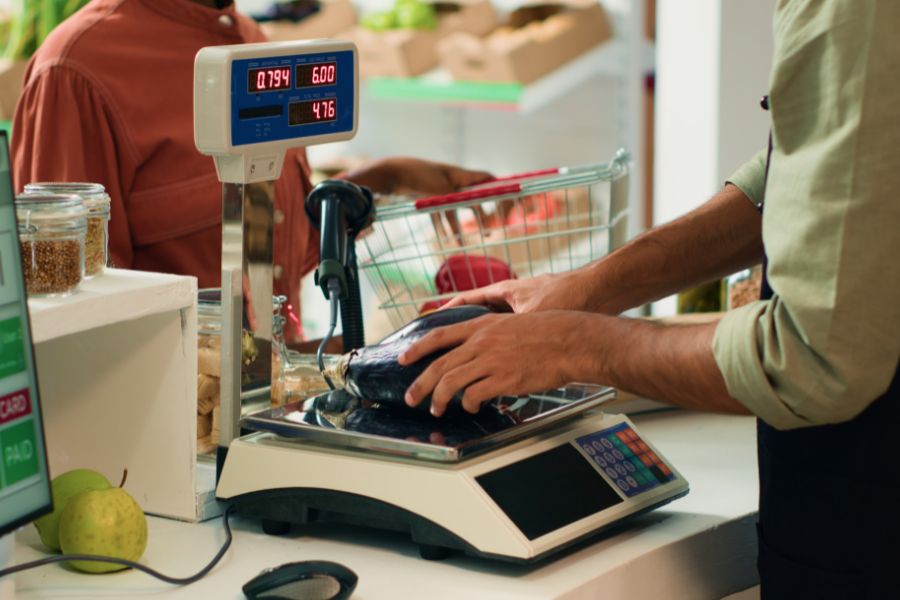Integrating a point-of-sale (POS) system with an ecommerce platform is increasingly important for Indonesian retailers navigating both online and offline sales. With the rise of marketplaces like Tokopedia and Shopee, along with widespread use of digital wallets, businesses need a system that keeps inventory, sales data, and customer records in sync. For those managing multiple channels, POS ecommerce integration helps reduce manual work, prevent stock discrepancies, and streamline transactions. In this article, we’ll explore the advantages, advice, and common mistakes of POS ecommerce integration Indonesia.
Highlight:
- POS eCommerce integration connects online and offline sales, keeping inventory, orders, and payments in sync for a smooth retail experience.
- Retailers in Indonesia can simplify operations by using a POS system that automates stock updates, speeds up transactions, and centralizes data across multiple sales channels.
Advantages of POS Ecommerce Integration Indonesia
Indonesia’s ecommerce market is on track to hit $95 billion by 2025, according to Bain & Company. With competition rising, retailers need a system that keeps both online and offline operations running smoothly.
Connecting your POS system with your online store simplifies operations, improves accuracy, and strengthens the customer experience.
These are the key advantages of implementing POS ecommerce integration Indonesia.
- Real-Time Inventory Synchronization
One of the biggest challenges for retailers operating both physical and online stores is inventory mismanagement. A disconnected system can lead to overselling, stockouts, or discrepancies between available stock and what’s displayed online. With POS ecommerce integration, inventory updates happen in real-time.
When a sale occurs in-store or online, stock levels adjust automatically, ensuring accurate availability across all sales channels. With this prevents lost sales due to stockouts and improves customer trust.
- Faster and More Accurate Order Fulfillment
Indonesian consumers expect fast and reliable order processing, especially with the rise of same-day and next-day delivery services. An integrated POS system automates order processing, reducing manual work and minimizing errors.
Orders from online channels are immediately reflected in the POS system, allowing for quicker packing, shipping, or in-store pickup. It leads to faster delivery times, higher customer satisfaction, and fewer order discrepancies.
- Seamless Payment Processing
Handling payments across multiple sales channels can be complex, especially with Indonesia’s diverse payment landscape, including GoPay, OVO, ShopeePay, credit/debit cards, and cash-on-delivery options. With POS ecommerce integration, businesses can consolidate payment methods and offer a smooth checkout experience, whether in-store or online.
- Better Customer Data Management
A unified customer database is essential for delivering personalized marketing and promotions. When your POS and ecommerce platform are connected, customer purchase history, preferences, and contact details are stored in one system. This allows businesses to:
- Implement loyalty programs that reward repeat customers.
- Offer personalized recommendations based on past purchases.
- Improve customer service by accessing order history instantly.
Simplified Returns and Exchanges
Managing returns and exchanges is often a pain point for retailers, but an integrated POS system simplifies the process. Whether a customer makes a purchase online and returns it in-store or vice versa, the system automatically updates inventory and sales records.
Key Features to Look for in a POS Ecommerce System
Below are the key features to consider when selecting the best POS ecommerce solution for your business.
Cloud-based vs. On-premise POS Solutions
Retailers must decide between cloud-based and on-premise POS systems based on their business needs.
- Cloud-based POS: These systems store data online, allowing real-time updates and access from anywhere. They are ideal for retailers with multiple locations or those who want to sync inventory and sales data automatically between online and offline stores. Cloud-based solutions also come with automatic software updates and lower upfront costs.
- On-premise POS: These are installed locally on a server and require manual updates and maintenance. While they offer greater control over data security, they may not provide real-time synchronization and require higher upfront investment in IT infrastructure.
Payment Gateway Compatibility in Indonesia
Indonesia’s retail landscape includes a mix of traditional and digital payment methods, making payment gateway compatibility a key feature. A robust POS system should support:
- E-wallets like GoPay, OVO, Dana, and ShopeePay
- Credit and debit cards (Visa, Mastercard, JCB, and local banks)
- Bank transfers and virtual accounts
- Cash on delivery (COD), still popular in many regions
- QRIS payments, Indonesia’s standardized QR code system for digital transactions
Integration with Local Marketplaces
With platforms like Tokopedia, Shopee, Bukalapak, and Lazada dominating Indonesia’s ecommerce market, integration with these marketplaces is essential. A POS system that can sync inventory, sales, and customer data across these platforms allows businesses to:
- Avoid overselling or stock discrepancies
- Centralize order management from multiple channels
- Improve fulfillment efficiency with automated order processing
Mobile and Tablet Compatibility for Flexibility
Modern retail requires mobility and flexibility. A POS system that works on mobile devices and tablets allows retailers to:
- Process sales on the go at events, pop-up shops, or kiosks
- Enhance in-store customer service with mobile checkout
- Manage operations remotely, especially for store owners who travel frequently
A mobile-compatible POS ensures businesses can adapt to changing consumer behaviors and deliver a seamless shopping experience anywhere.
Advice to Choose the Right POS Ecommerce Integration Indonesia
With the rapid growth of Indonesia’s ecommerce sector, businesses must adopt a flexible, scalable, and feature-rich POS system that seamlessly connects online and offline sales. Therefore, here’s what to consider when choosing the right POS ecommerce integration Indonesia.
Choose a POS System That Supports Integration
Not all POS systems support integration with ecommerce platforms like WooCommerce, Shopify, or Magento. A system that links smoothly with your online store so that sales data, inventory, and customer details stay updated without manual input.
A comprehensive setup can:
- Reduce errors from manual data entry
- Prevent stock discrepancies between online and offline stores
- Speed up order processing by syncing sales channels automatically
Without proper integration, you may struggle with mismatched stock levels, delayed order fulfillment, and inefficient operations.
Check Compatibility with Local Payment Methods
Indonesia’s payment landscape is highly diverse, and customers expect businesses to accept multiple payment options. A POS system should support:
- E-wallets: GoPay, OVO, ShopeePay, Dana
- Credit/Debit Cards: Visa, Mastercard, JCB, and local bank cards
- QRIS Payments: Indonesia’s unified QR payment system
- Bank Transfers & COD: Still widely used across various customer segments
A POS system with broad payment compatibility prevents lost sales due to limited transaction options and enhances customer convenience.
Automate Data Syncing Across All Sales Channels
One of the biggest challenges in multi-channel retailing is keeping stock and order data consistent across platforms. A POS system that syncs automatically helps businesses:
- Update stock levels automatically after each sale to prevent overselling.
- Sync customer purchase history for better service and personalized marketing.
- Ensure real-time order processing for fast fulfillment.
Automation eliminates manual errors and allows retailers to focus on business growth instead of administrative tasks.
Leverage Analytics for Smarter Retail Management
A POS system with built-in analytics helps businesses track sales performance, customer preferences, and inventory trends. Key features to look for include:
- Sales performance tracking (top-selling products, revenue trends).
- Customer insights (shopping behavior, purchase frequency).
- Inventory forecasts to prevent stockouts or overstocking.
Leveraging analytics, retailers can optimize pricing strategies, forecast demand accurately, and improve overall business performance.
Optimize Omnichannel Shopping Experiences
Modern customers expect a seamless experience across all shopping channels. The proper POS integration should allow businesses to:
- Offer click-and-collect (BOPIS) services for customer convenience.
- Simplify returns and exchanges, whether the purchase was made online or in-store.
- Personalize marketing through a unified customer database.
When customers can switch between online and offline shopping effortlessly, they are more likely to return and make repeat purchases.
Why ConnectPOS SEA Works Well for Indonesian Retailers
Indonesia’s retail market is fast-paced, requiring businesses to manage both online and offline sales efficiently. ConnectPOS SEA helps by keeping inventory, payments, and customer data in sync.
ConnectPOS SEA brings many benefits such as:
- Seamless Multi-Platform Compatibility: ConnectPOS SEA integrates with WooCommerce, Shopify, Magento, and BigCommerce, making it easier to manage products, track stock, and process orders without manual updates.
- Smooth, Flexible Transactions: ConnectPOS SEA allows businesses to accept GoPay, OVO, ShopeePay, QRIS, bank transfers, and credit/debit cards, promising smooth transactions for all customers.
- Multi-Store Management: For businesses with multiple locations, ConnectPOS SEA provides real-time sales tracking, stock transfers, and centralized pricing, making operations more efficient.
- Improves the Shopping Experience: Businesses can build stronger customer relationships by using ConnectPOS’s loyalty programs, personalized promotions, and hassle-free returns for both online and in-store purchases.
- Offline Mode: Even during internet outages, ConnectPOS SEA keeps transactions going and syncs data once the connection is restored.
With these capabilities, retailers can stay organized, improve customer experience, and keep up with Indonesia’s competitive retail market.
FAQs: POS Ecommerce Integration Indonesia
- How Does POS Integration Improve Customer Experience?
POS integration creates a smoother, more personalized shopping experience. It allows businesses to offer flexible buying options like buy-online-pickup-in-store (BOPIS), fast checkouts with local payment methods, and hassle-free returns or exchanges. Additionally, a unified customer database supports personalized recommendations and loyalty rewards.
- Can POS Integration Support Business Expansion?
Yes! A scalable POS system with multi-store management and marketplace integration allows businesses to expand seamlessly. You can monitor sales across branches, manage stock transfers, standardize promotions, and centralize data for better decision-making. Built-in analytics also help identify growth opportunities.
- How Do I Get Started with POS ecommerce Integration?
Start by assessing your business needs and choosing a POS system that supports seamless integration with your online store and local marketplaces. Ensure it offers comprehensive payment support, real-time data syncing, and reporting features. Solutions like ConnectPOS SEA are designed to help Indonesian retailers unify operations, optimize omnichannel experiences, and scale effortlessly.
Conclusion
Integrating a POS system with an ecommerce platform helps retailers in Indonesia keep inventory accurate, speed up order processing, and handle payments without disruptions. A centralized system simplifies multi-store management, syncs with marketplaces, and provides valuable data insights for business growth. By adopting POS eCommerce integration Indonesia, retailers can streamline operations and improve the shopping experience for their customers.
Looking to upgrade your retail system? Explore ConnectPOS SEA and see how the right integration can transform your business. Contact us today!





